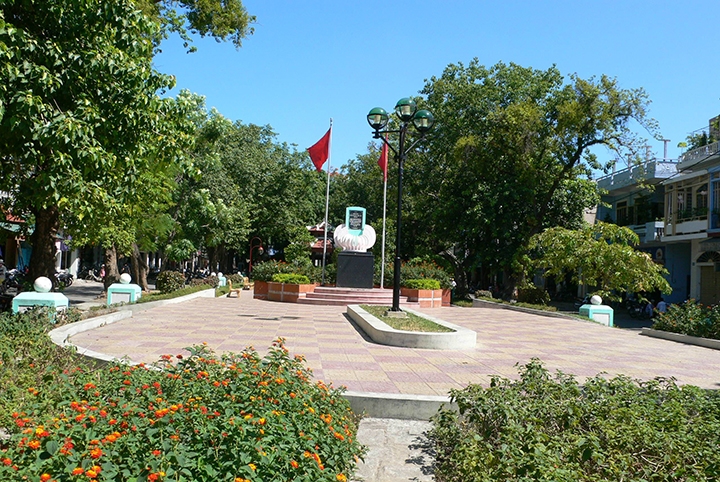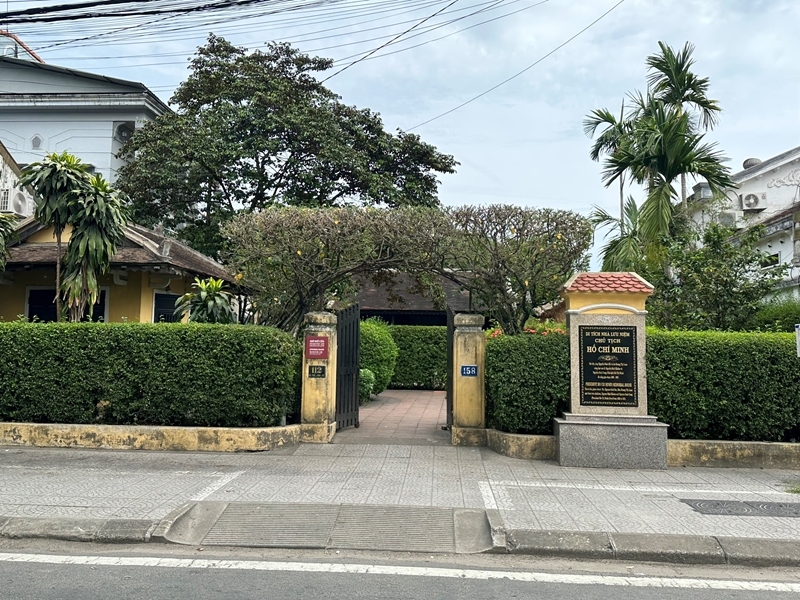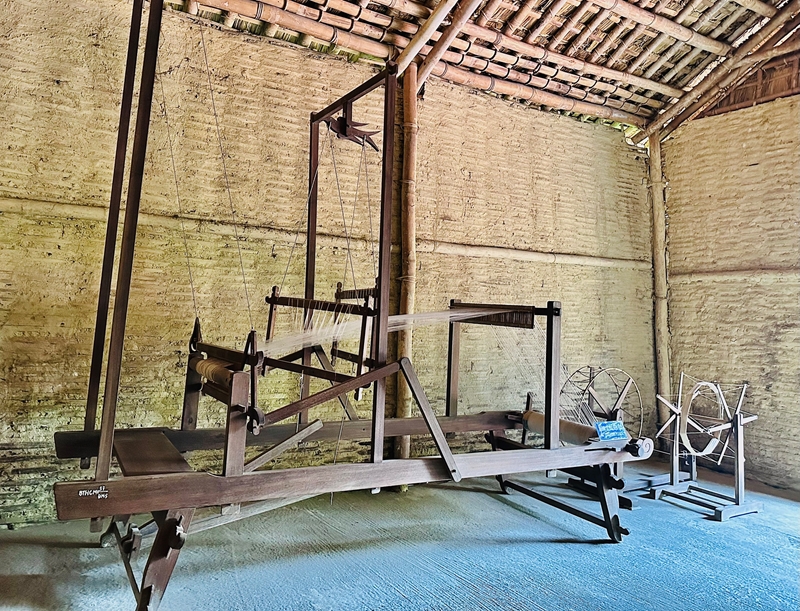During his childhood, Uncle Ho lived in Hue for about 10 years. Places associated with President Ho Chi Minh's childhood in the ancient capital of Hue will be introduced.
President Ho Chi Minh followed his father to live in Hue from 1895 to 1901, when he was a child named Nguyen Sinh Cung (5 - 11 years old), and from 1906 - 1909, when he was a young man, named Nguyen Tat Thanh (16 - 19 years old).

The National School of Hue - where Uncle Ho studied.
According to documents, in May 1906, Nguyen Sinh Sac went to Hue to take office after passing the exam, bringing Nguyen Tat Thanh with him and he was admitted to the French-Vietnamese Dong Ba Primary School. This school was established in 1905, on the grounds of the old Dong Ba market hall. This was the first French-Vietnamese primary school in Hue.

Park on Phan Dang Luu Street, Hue City, the location of the French-Vietnamese Dong Ba Primary School, where Uncle Ho studied from 1906 to 1908
In the 1908 primary school graduation exam, Nguyen Tat Thanh was one of 10 students of the school who were transferred directly to the Hue National School, secondary school. Nguyen Tat Thanh was especially good at Chinese characters, and he was naturally intelligent in French. In addition, with the goal of learning the roots of France, he had a solid level of French in a short time. Here, he met teachers who were very devoted to the nation and learned many things from them, contributing to broadening his vision, expanding his knowledge, and strongly influencing his thinking.
The National School, which left a mark on the excellent student Nguyen Tat Thanh in Hue, was recognized as a National Historical Relic on March 26, 1990.

The memorial house of President Ho Chi Minh's childhood on Mai Thuc Loan Street.
The pink school by the Huong River has been repaired and rebuilt many times, but many documentary images of the school associated with the period when President Ho Chi Minh studied are always treasured by generations of teachers and students of the school. At the memorial house of Uncle Ho and the tradition of Hue National School, the enlarged photo of President Ho Chi Minh is hung solemnly with the monument and many images recording his years of revolutionary activities. In the middle of the school yard, the statue of student Nguyen Tat Thanh is placed in the most solemn position as if to remind generations of students at the school to promote the spirit of studiousness and strive for their ideals.
In mid-1909, Nguyen Tat Thanh left Hue National School, followed his father to Binh Dinh, continued to the South, and then to the West to find a way to save the country.

Mrs. Hoang Thi Loan's loom in the kitchen The relic site on Mai Thuc Loan Street
The memorial house of President Ho Chi Minh's childhood on Mai Thuc Loan Street is the first house he lived in when he followed his family to Hue for the first time from 1895 to 1901. The house was recognized by the Ministry of Culture and Information as a national historical relic under Decision No. 74/VH-QD dated February 2, 1993.
Thua Thien Hue is implementing Resolution 54-NQ/TW of the Politburo, taking heritage as the foundation, building Hue into a heritage city of Vietnam, along with the system of heritage sites of the Ancient Capital; historical, cultural, architectural and scenic sites; Ho Chi Minh heritage, and is striving to become an advantage in the construction and development of the province. Therefore, since the beginning of 2021, the Department of Culture and Sports has directed the Ho Chi Minh Museum of Thua Thien Hue to develop the Project: "Promoting the value of President Ho Chi Minh relics in Thua Thien Hue to serve tourism development" and has been approved by the People's Committee of Thua Thien Hue province.
The goal of the Project is to develop museum tourism and the system of President Ho Chi Minh memorial relics on the basis of exploiting and promoting potentials and advantages, meeting the needs of sightseeing and tourism, in accordance with the planning and key programs for tourism and service development of the province; creating a red address to educate patriotic traditions, while also being an attractive cultural and historical tourist destination, attracting visitors./.